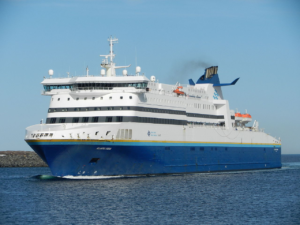
Newfoundland and Labrador is the easternmost province of Canada, in the country’s Atlantic region. It is composed of the island of Newfoundland and the continental region of Labrador to the northwest, with a combined area of 405,212 square kilometers. In 2018, the province’s population was estimated at 525,073. About 94% of the province’s population lives on the island of Newfoundland (and its neighboring smaller islands), of whom more than half live on the Avalon Peninsula. The province is Canada’s most linguistically homogeneous, with 97.0% of residents reporting English (Newfoundland English) as their mother tongue in the 2016 census.
Newfoundland and Labrador’s capital and largest city, St. John’s, is Canada’s 20th-largest census metropolitan area and is home to almost 40 per cent of the province’s population. St. John’s is the seat of government, home to the House of Assembly of Newfoundland and Labrador and to the highest court in the jurisdiction, the Newfoundland and Labrador Court of Appeal.
The Confederation Building Newfoundland and Labrador
Most of Newfoundland has a humid continental climate, cool summer subtype. Newfoundland and Labrador has a wide range of climates and weather, due to its geography. The province has been divided into six climate types, but broadly Newfoundland has a cool summer subtype of a humid continental climate, which is greatly influenced by the sea since no part of the island is more than 100 km from the ocean. Northern Labrador is classified as a polar tundra climate, southern Labrador has a subarctic climate. Surface water temperatures on the Atlantic side reach a summer average of 12 °C (54 °F) inshore and 9 °C (48 °F) offshore to winter lows of −1 °C (30 °F) inshore and 2 °C (36 °F) offshore. Sea temperatures on the west coast are warmer than Atlantic side by 1-3 °C (approximately 2-5 °F). The sea keeps winter temperatures slightly higher and summer temperatures a little lower on the coast than inland.

Service industries accounted for the largest share of GDP, especially financial services, health care and public administration. Other significant industries are mining, oil production and manufacturing. Mines in Labrador, the iron ore mine at Wabush/Labrador City, and the nickel mine in Voisey’s Bay produced a total of $3.3 billion worth of ore in 2010.
Oil production from offshore oil platforms on the Hibernia, White Rose and Terra Nova oil fields on the Grand Banks, contributed to more than 15 per cent of the province’s GDP in 2006.
Newsprint is produced by one paper mill in Corner Brook with a capacity of 420,000 tons (460,000 tons) per year.
Lumber is produced by numerous mills in Newfoundland. Apart from seafood processing, paper manufacture and oil refining, manufacturing in the province consists of smaller industries producing food, brewing and other beverage production. The fishing industry remains an important part of the provincial economy. Agriculture in Newfoundland is limited to areas south of St. John’s, Cormack, Wooddale, areas near Musgrave town and in the Codroy Valley. Potatoes, rutabagas, turnips, carrots and cabbage are grown for local consumption. Poultry and eggs are also produced. Wild blueberries, partridgeberries (lingo berries) and bake apples (cloudberries) are harvested commercially and used in jams and wine making. Dairy production is another huge part of the Newfoundland Agriculture Industry.
Tourism is also a significant contributor to the province’s economy. Tourism is most popular throughout the months of June–September, the warmest months of the year with the longest hours of daylight.

Photo: MV Atlantic Vision
The St. John’s International Airport (YYT) and the Gander International Airport (YQX) are the only airports in the province that are part of the National Airports System.
Tshiuetin Rail Transportation operates passenger rail service on its Sept-Îles, Quebec, to Schefferville, Quebec, route, passing through Labrador and stopping in several towns.
Within the province, the Newfoundland and Labrador Department of Transportation and Works operates or sponsors 15 automobile, passenger and freight ferry routes which connect various communities along the province’s significant coastline.
A regular passenger and car ferry service, lasting about 90 minutes, crosses the Strait of Belle Isle, connecting the province’s island of Newfoundland with the region of Labrador on the mainland.

Photo: Chemistry Building @ Memorial University
Newfoundland and Labrador has had the same growing pains as other provinces in developing its own form of education and now boasts a very strong, although relatively small, system.
The Degree Granting Act of Newfoundland and Labrador regulates degree-granting universities in the province. The only university in Newfoundland and Labrador, Memorial University of Newfoundland, has campuses in three cities, in St. John’s, the capital of Newfoundland and Labrador, on the west coast of the province, in Corner Brook, and in Harlow, U.K. With 18,172 enrolled students, it is the second largest university in Atlantic Canada.
College of the North Atlantic (CNA) is one of the largest post-secondary educational and skills training centers in Atlantic Canada.
Source of the majority of Photos and Content of this page: Wikipedia
It is your duty in life to save your dream
AMEDEO MODIGLIANI